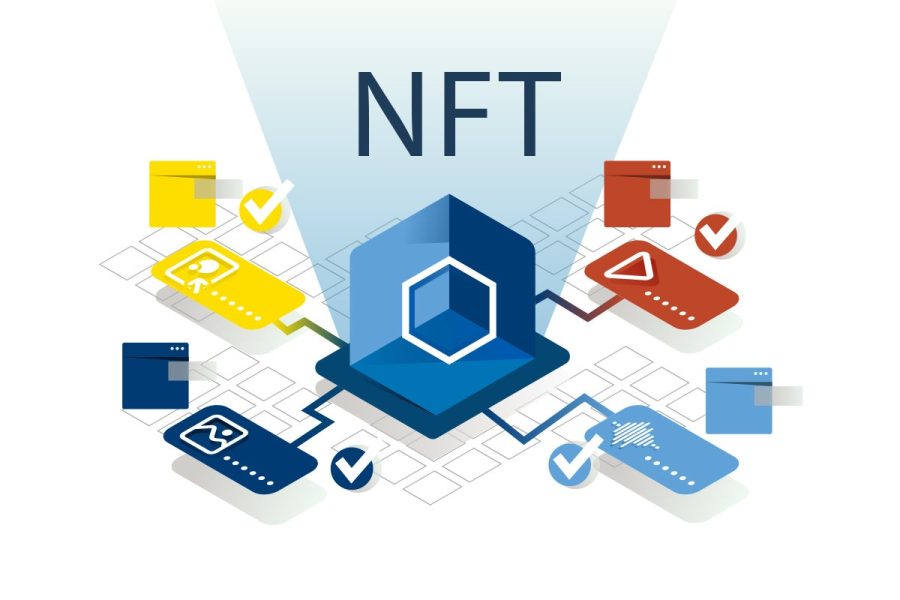The world of art has always been fascinating and vibrant, with its unique blend of creativity, passion, and imagination. For many years, artists have been creating masterpieces that have inspired and captivated audiences worldwide. However, the art world is now being transformed by a new innovation that promises to revolutionize how we buy and sell art: non-fungible tokens (NFTs). In this article, we will explore what NFTs are, how they work, and their impact on the art world.
What Are Non-Fungible Tokens (NFTs)?
Non-fungible tokens (NFTs) are unique digital assets that are stored on a blockchain. Unlike other digital assets like cryptocurrencies, which are fungible and can be exchanged for other assets of equal value, NFTs are unique and cannot be exchanged for anything else. Each NFT is a unique digital asset verified on a blockchain and cannot be replicated.
NFTs can represent anything that is digital, including art, music, videos, and even tweets. The owner of an NFT has a unique digital certificate of ownership, which can be verified on a blockchain. NFTs have become increasingly popular in recent years, and their use has exploded in art.
How NFTs Are Changing the Art World
NFTs are having a significant impact on the art world in several ways. They are changing how artists sell their work, how collectors buy art, and how art is valued.
- Changing the Way Artists Sell Their Work
Traditionally, artists have sold their work through galleries or auction houses. However, NFTs are changing the game by allowing artists to sell their work directly to collectors. This means that artists can retain more control over their work and keep a larger percentage of the profits.
NFTs also make it easier for artists to sell their work internationally, as buyers from anywhere in the world can purchase an NFT online. Additionally, because NFTs are unique and cannot be replicated, artists can ensure their work is not undervalued or pirated.
- Changing the Way Collectors Buy Art
NFTs are also changing the way collectors buy art. With NFTs, collectors can access a wider range of artwork than ever before. They can browse and purchase art from all over the world without travelling to galleries or auctions.
NFTs also offer collectors a level of authenticity that was previously impossible. Because each NFT is verified on a blockchain, buyers can be certain that the artwork they purchase is authentic and unique. This level of authenticity also adds value to the artwork and can increase its resale value.
- Changing the Way Art is Valued
NFTs are also changing the way art is valued. In the past, the value of a piece of artwork was determined by a combination of factors, including the reputation of the artist, the rarity of the work, and its historical significance. However, with NFTs, the value of an artwork is determined by the market demand for it.
Because NFTs are unique and cannot be replicated, they are often seen as more valuable than other digital assets. Additionally, the fact that NFTs are stored on a blockchain adds a level of transparency to the art market that was previously missing. Buyers can see the entire transaction history of an NFT, which can help to establish its value.
Challenges and Criticisms of NFTs in the Art World
Despite the many benefits that NFTs offer to the art world, there are also some challenges and criticisms associated with their use.
One of the main criticisms is the environmental impact of NFTs. The process of creating and verifying NFTs requires a significant amount of energy, which can contribute to climate change. Some artists and collectors have expressed concerns about the carbon footprint of NFTs and are calling for more sustainable solutions.
Another criticism of NFTs is their potential to exacerbate wealth inequality in art. NFTs are often sold for high prices, and only a small group of collectors may be able to afford them. This can make it difficult for emerging artists to break into the market, as they may not have the resources or connections to sell their work as NFTs.
Finally, some critics argue that the hype around NFTs is a bubble that will eventually burst. They point to the rapid rise and fall of cryptocurrencies like Bitcoin as an example of how digital assets can quickly lose value. As more and more NFTs flood the market, some worry that the demand for them will decrease, leading to a crash in their value.
Conclusion
Non-fungible tokens are a groundbreaking innovation that is changing the art world in significant ways. They allow artists to sell their work directly to collectors, give buyers access to a wider range of artwork, and change how art is valued. However, there are also challenges and criticisms associated with using NFTs, including their environmental impact, potential to exacerbate wealth inequality, and the possibility of a market crash.
As the use of NFTs continues to grow in the art world and beyond, it will be important to address these challenges and ensure that they are used to benefit everyone involved. Whether NFTs represent a lasting innovation or a passing trend remains to be seen, but one thing is certain: they are already changing how we think about and interact with digital art.
I’m a highly experienced and successful crypto author with over 10 years of experience in the field. I have written for some of the most popular crypto publications, including Bitcoin Magazine, CoinDesk, and Crypto Insider. I have also been featured in major mainstream media outlets such as Forbes, Wall Street Journal, and Business Insider.
